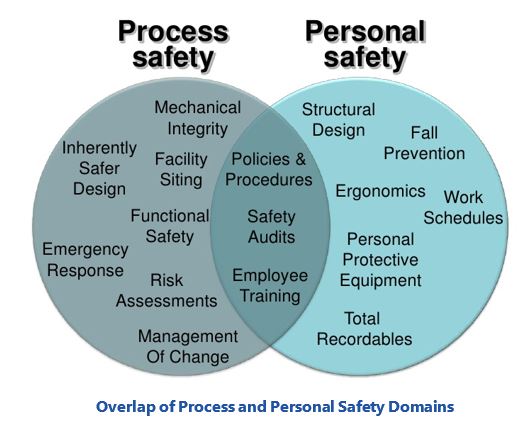

Traditionally, conversations around automation and safety focused largely on logic solvers and instrumentation. But new, disruptive technologies and a rapid expansion in networking and computing resources have expanded the scope of automation’s reach. These transformative technologies and approaches promise to reduce incidents and increase production in ways industry could only imagine in the past.
Industry is on the cusp of a more holistic, fully integrated, and comprehensive automation safety solution for enterprise. The “pieces” are available; the “glue” is still in the works. Organizational silos and culture stand in the way.
The industry has seen slow and steady change in safety automation over the last 100 years. Highly localized, independent, mechanically actuated systems evolved into pneumatic systems that could deal with greater complexity and physical reach. Then plants began to replace pneumatics with electromechanically-actuated devices that were easier to maintain and change. Today, these large, complex, relay-based systems have been replaced by microprocessor-based logic solvers that offer even greater flexibility and ease-of-maintenance over previous systems. These systems also provide users with more feedback relative to system status and readiness. Recent technologies will confirm compliance to the original design, alert users to maintenance issues, and simplify auditing procedures.
Safety automation, however, has always centered around the automation involving process-connected devices. Other aspects of safety in the process continue to be handled manually and administered by offline databases, especially people-centric interests.
Recent advancements in computing and connectivity technologies promise to expand the use of automation within a facility’s overall process safety program. But this goes well beyond the technology. Expanding regulations and public perception contribute to the wider reliance on automation.
Analytics already play a growing role in process safety, but not just directly related to the control systems. Predictive/prescriptive analytics can enhance process safety in a variety of ways, primarily in avoiding unanticipated failures. Predictive analytics’ biggest bang has been in maintenance and asset reliability. Being able to predict when a large piece of equipment will fail is a big win for operations and maintenance planning, but also means that the facility operates safer because operators are less likely to make a mistake reacting to the failure and a breach of containment is less likely. This technology has expanded beyond individual pieces of equipment to cover an entire processing unit and even extend across the supply chain. The effect is the same; avoiding the situations that increase the risk to people, processes, and the environment.
Artificial intelligence (AI) is another related technology. Current AI applications are also centered around prediction, but the learning aspect to the technology implies that it can infer things that people haven’t recognized and alert users in advance. Again, this helps avert dangerous situations that increase risk. AI is also being applied to video feeds. The technology can recognize who is where. It can alert operations to unauthorized access, improperly dressed personnel, or physical abnormalities in the unit. It could also be used with thermal cameras to provide alerts related to process deviations and/or personnel.

Robots and drones also continue to storm the industrial scene. Some can go where no man or woman can (or really should) go; like into confined and/or potentially dangerous spaces. These devices can also be instrumented with a variety of sensors and cameras to provide more information about the processing and asset environments.
Automation affects administrative tasks, as well. For years now, dashboards have been used to aggregate data to provide useful information. Databases track various aspects of process safety systems, process systems, plant run data, design data, training, personnel backgrounds, equipment maintenance, etc. Analytics allow a view into each of these.
So how can all this be brought together?
The industry is already applying these technologies in siloes and in pilot programs. Like manufacturing data, safety data tends to be scattered in various formats and in disparate databases throughout the organization. Transformative technologies like data lakes and cloud computing can be used to aggregate all types of data and present information about all aspects of the manufacturing enterprise. But what about safety?
Let’s consider a comprehensive safety automation scenario in which a predictive algorithm recognizes a potential disruption in the process unit. Due to the nature of the exothermic process, this provides less than an hour’s advance warning of a release of gases. The warning comes from a group of machine learning algorithms trained via historical data and simulation from a high-fidelity model exercised through an automated testing application. Obviously, an automatically initiated warning would be sent to the operator, but also to those people known to be in the danger zone. AI systems would then push alerts to available experts about the issue. These experts might be located anywhere globally and may or may not be on staff.
ARC Advisory Group clients can view the complete report at ARC Client Portal
If you would like to buy this report or obtain information about how to become a client, please Contact Us
Keywords: Process Safety, SIS, DCS, Alarm, Analytics, IIoT, Automation, Video, Drones, Robots, Artificial Intelligence, Network Infrastructure, Human Resources, Digital Transformation, ARC Advisory Group.

